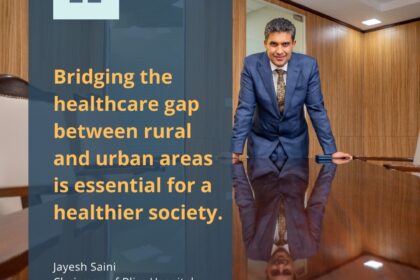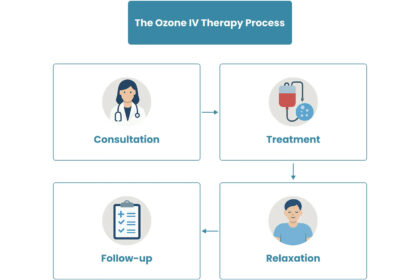From Margins to Model: How Jayesh Saini Is Turning Neglected Zones into Healthcare Hubs
In the heart of Kenya’s arid counties, where hospitals once existed only as distant rumors, something extraordinary is unfolding. Places that were long defined by what they lacked doctors, equipment, infrastructure are now becoming symbols of possibility.
This transformation didn’t happen overnight, and it didn’t happen by accident. It began with a simple but radical conviction: that every Kenyan deserves access to quality healthcare, regardless of geography or income. That conviction belongs to Jayesh Saini, a healthcare visionary whose work is quietly rewriting the country’s medical geography.
Reimagining the Margins
For decades, the story of Kenya’s healthcare expansion has been uneven. Urban centers flourished with private hospitals, while rural and border communities were left to rely on overstretched public dispensaries. The result was predictable crowded city facilities and neglected villages.
But Saini saw these neglected spaces differently. Where others saw low returns, he saw unrealized potential. Where others saw sparse populations, he saw communities hungry for dignity and access. His approach flipped the script: instead of expanding from the center outward, he began building from the margins inward.
The Blueprint for Equitable Access
Through the Lifecare hospital network, Saini introduced a new healthcare equation one that blends medical excellence with social responsibility. Each new facility built in a low-resource region becomes more than a hospital; it becomes a hub of opportunity, training, and trust.
In counties like Kajiado, Kitui, and Machakos, equitable hospitals have emerged as anchors for local ecosystems. They offer everything from maternal care to chronic disease management supported by teleconsultations, affordable pharmacies (through Dinlas Pharma), and diagnostic linkages that ensure no patient is stranded.
This model challenges the long-held notion that quality healthcare belongs only to cities. By proving that advanced medical infrastructure can thrive in smaller towns, Saini is turning Kenya’s forgotten zones into functional models for rural health systems.
The Ripple Effect: Jobs, Training, and Hope
The transformation isn’t just clinical it’s social. Every hospital built creates jobs for nurses, lab technicians, and administrative staff. Young professionals who once migrated to Nairobi in search of work now find purpose closer to home.
Through Lifecare Foundation programs, community health volunteers receive training in preventive care, maternal health, and chronic condition monitoring. These volunteers act as the first link between patients and hospitals, ensuring early detection and consistent follow-ups.
The impact ripples outward families regain stability, patients avoid costly emergencies, and small local economies begin to grow around these healthcare hubs. What once felt like forgotten land now buzzes with human activity and renewed confidence.
Turning Isolation into Innovation
Building hospitals in resource-scarce regions comes with undeniable challenges: rough roads, limited electricity, workforce shortages. Yet, each obstacle has become an invitation to innovate.
To overcome these gaps, Saini has invested in mobile diagnostic units, solar-powered systems, and telehealth infrastructure connecting rural clinics to specialists across Kenya. In remote zones where medical expertise is scarce, technology bridges distance transforming isolation into inclusion.
His approach proves that innovation doesn’t have to mean futuristic gadgets; it can mean smart design and sustainable systems that serve real communities.
Leadership Rooted in Empathy
At its core, Saini’s model is about more than buildings it’s about belief. A belief that leadership must not only envision progress but also stand with the people it serves.
His team often describes his philosophy as “building from the ground, not for the ground.” By listening to local leaders, religious heads, and even traditional healers, Saini ensures that healthcare is introduced with respect for cultural context. This humility has made his hospitals trusted spaces, not foreign entities.
“Trust is the foundation of every successful health system,” a Lifecare administrator in Isiolo remarks. “People don’t come to us because we’re private; they come because we’re present.”
From Healthcare Access to Healthcare Equity
Kenya’s healthcare challenges are deeply intertwined with geography, economy, and awareness. But Saini’s transformation of healthcare demonstrates that equity isn’t a distant goal it’s achievable through consistency, collaboration, and courage.
His long-term vision is to create a self-sustaining rural health model where local clinics feed into regional hospitals, supported by digital records, preventive education, and affordable treatment. It’s a living ecosystem rather than a collection of disconnected facilities.
By expanding healthcare outward, he’s also pulling opportunity inward empowering communities once left behind to become active participants in their own well-being.
The Africa-Wide Implication
Saini’s work in Kenya is gaining attention beyond national borders. Health experts from neighboring countries like Uganda and Tanzania have begun studying his rural health models as potential blueprints for equitable access. The appeal lies in its simplicity: no dependency on massive funding, just the disciplined use of local leadership, affordable innovation, and community ownership.
It’s a model that speaks to Africa’s broader healthcare future pragmatic, inclusive, and scalable.
Conclusion: Building Hope Where It Was Absent
In the end, the true measure of leadership isn’t how much one builds, but where one chooses to build. Jayesh Saini’s legacy lies in the quiet courage to invest in the invisible, to bring healing where statistics once predicted failure.
From Kenya’s farthest counties to its growing urban neighborhoods, his story reframes what leadership can mean in healthcare not the pursuit of prestige, but the pursuit of presence.
By turning margins into models, Saini reminds us that equity begins not with policy, but with people and that the future of African healthcare will be shaped by those who dare to build where others wouldn’t even look.

